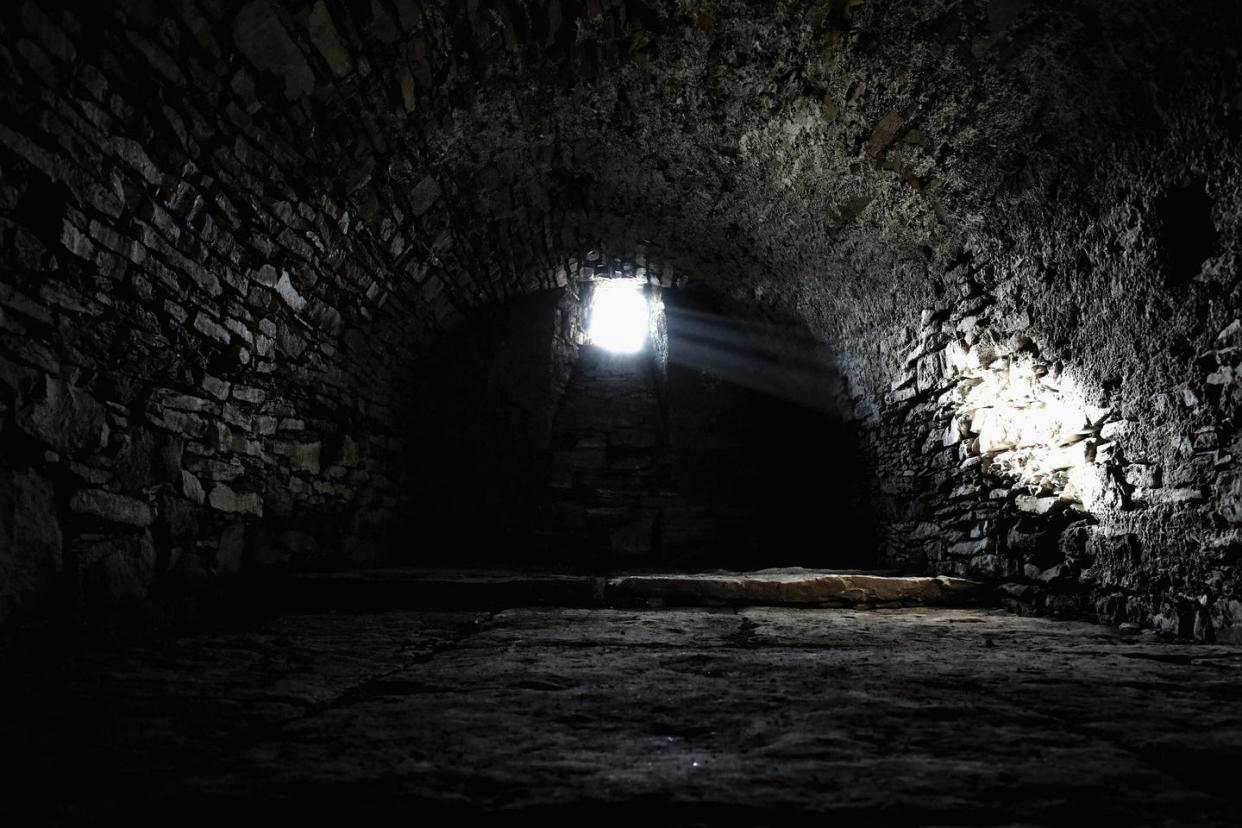Archaeologists Found Chilling Graffiti in an Ancient Prison: 'Make Them Die an Awful Death'

An ancient fifth-century Roman prison discovered in Greece contains harrowing graffiti on the prison floor.
Located in Corinth, Greece, the Greek-language pleas that remain etched into the prison’s remnants cast a shadow of disdain for those that put the captives in confinement.
Roman prisons, of which few have been excavated across the former empire’s terrain, were a “dark place” that led some in captivity to wish harm on those who put them there.
Ancient Roman prisons were not at all pleasant, at least according to one captive. An archaeologist that identified the remains of a prison in Corinth, Greece, found that an ancient inmate had some not-so-nice things to say about their captors.
The prisoner left their ancient Yelp review on the prison floor, rendering a prayer for their captors for all to see: “Lord, make them die an awful death.”
Matthew Larsen, an archaeologist and associate professor of New Testament at the University of Copenhagen, wrote in the journal Hesperia that prisons “must have existed in almost every Roman town, at least those that had a forum,” but the archaeological remains of those prisons have “proven exceedingly hard to identify.”
A 1901 excavation uncovered the prison in Corinth, and Larsen recently studied the prison and the graffiti found inside as well. He identified the site as a prison by comparing excavation records and by examining the graffiti found written on the floor, concluding the remains are 1,600 years old.
While the flooring found in 1901 had a wealth of cracks, Larsen says that all the etched words were found within the confines of the cracks. That led him to the conclusion that the slabs hadn’t been moved to the site from previous use, meaning that all that graffiti marked onto the floor was done in place, while the site served as a prison.
Add in that the find uncovered jugs and lamps meant to offer water and light reminiscent of what might be found in a prison, and that a small bathroom was found in what could have been a guard’s quarters, and all signs point further toward the ancient architecture being the remnants of a Roman prison.
Plus, a quick reading of the Greek-written graffiti in the cracks of the floor shows whoever was locked up was none too happy about it.
The anguish is evident in the ancient graffiti authors’ writing. Some of the pleas read “May the fortune of those who suffer in this lawless place prevail. Lord, do not show mercy on the one who threw us in here.” Another etched plea: “Godbearer, repay [punishment given by] Marinos, the one who threw us in here and made us spend winter.” Larsen surmises the winters were especially rough on the prisoners.
This particular prison is likely from a time the Roman Empire had control of Corinth. That didn’t lead to a healthy relationship between the Roman rulers and the Greek prisoners. Larsen told Live Science it exasperated the difficult existence in the prison. “You get a sense that they’re in a very dark space,” he said, “that they cannot be given a hearing.”
While life was dreary—and full of desire for vengeance—some prisoners were apparently making the best of a bad situation. One inscription praised the “fortune of the beautiful girls who love the unmarried men” and other locations featured game boards that would have given the prisoners something to do when not inscribing vindictive threats against those who put them in the cheerless confines.
You Might Also Like






